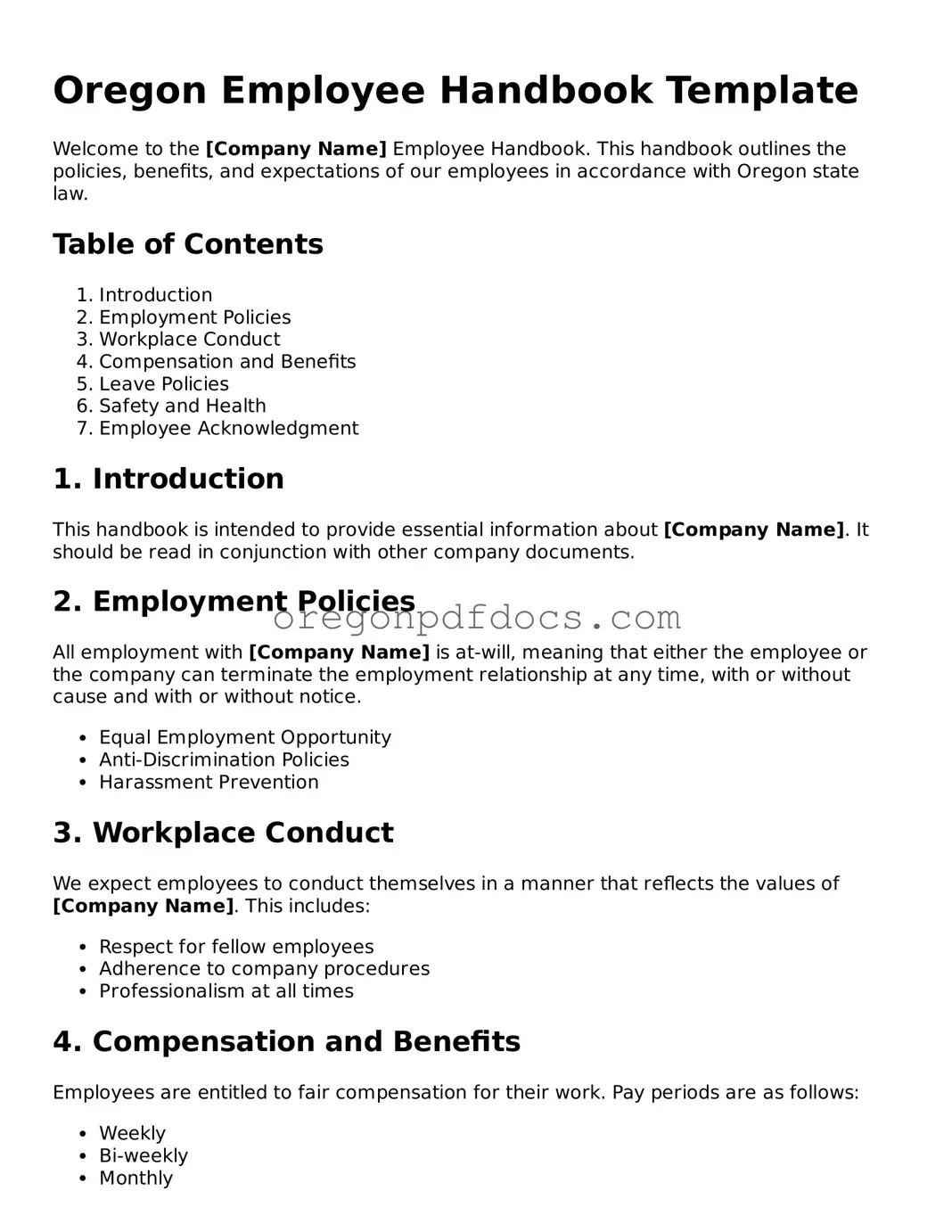Oregon Employee Handbook Template
Welcome to the [Company Name] Employee Handbook. This handbook outlines the policies, benefits, and expectations of our employees in accordance with Oregon state law.
Table of Contents
- Introduction
- Employment Policies
- Workplace Conduct
- Compensation and Benefits
- Leave Policies
- Safety and Health
- Employee Acknowledgment
1. Introduction
This handbook is intended to provide essential information about [Company Name]. It should be read in conjunction with other company documents.
2. Employment Policies
All employment with [Company Name] is at-will, meaning that either the employee or the company can terminate the employment relationship at any time, with or without cause and with or without notice.
- Equal Employment Opportunity
- Anti-Discrimination Policies
- Harassment Prevention
3. Workplace Conduct
We expect employees to conduct themselves in a manner that reflects the values of [Company Name]. This includes:
- Respect for fellow employees
- Adherence to company procedures
- Professionalism at all times
4. Compensation and Benefits
Employees are entitled to fair compensation for their work. Pay periods are as follows:
Benefits include health insurance, retirement plans, and other perks that will be detailed upon hiring.
5. Leave Policies
Employees may be eligible for various types of leave including:
- Vacation Leave
- Sick Leave
- Family and Medical Leave
- Oregon Family Leave Act (OFLA)
6. Safety and Health
Employee safety is of utmost importance. Adherence to workplace safety standards is mandatory, including:
- Reporting unsafe conditions
- Adopting safe work practices
7. Employee Acknowledgment
By signing below, you acknowledge that you have received and understood the policies outlined in this handbook.
Name: [Employee Name]
Signature: ___________________ Date: _______________
